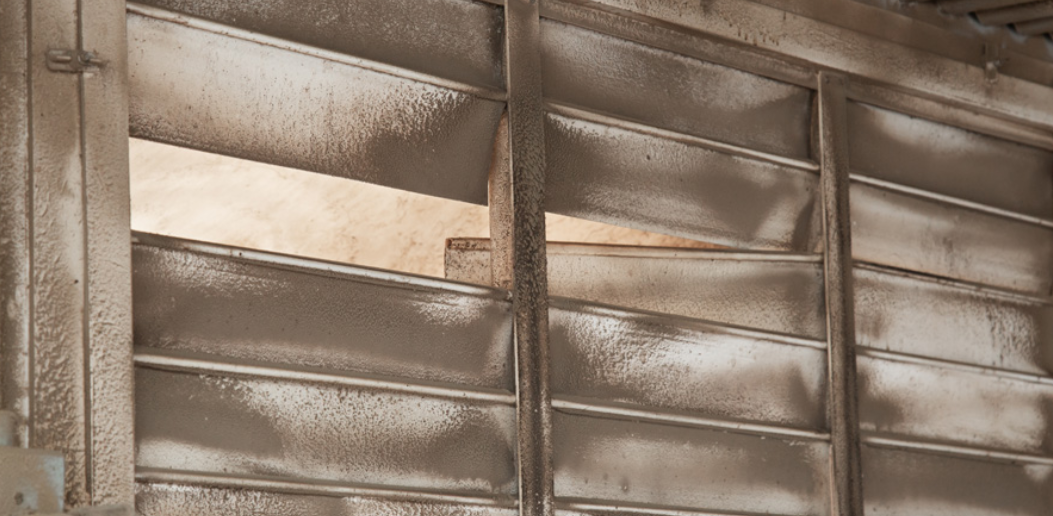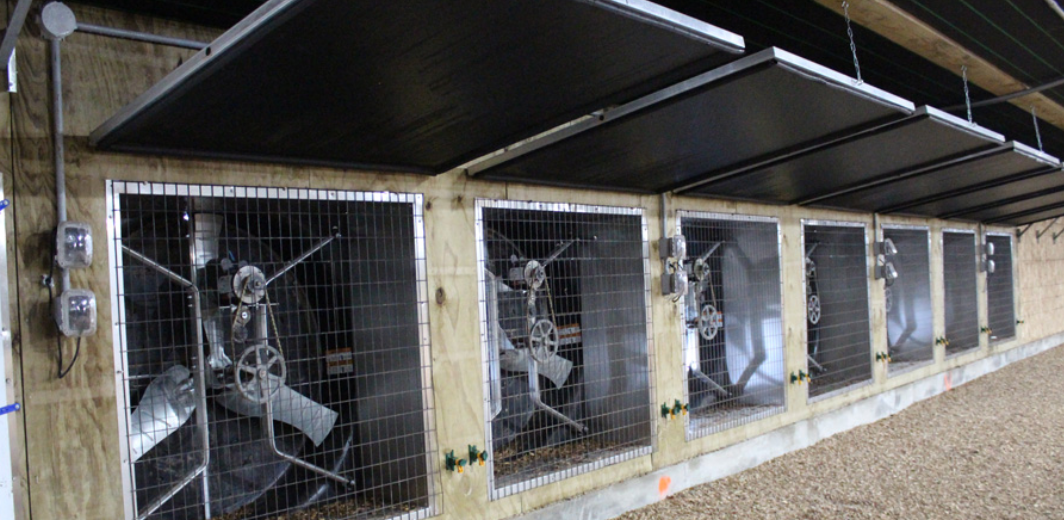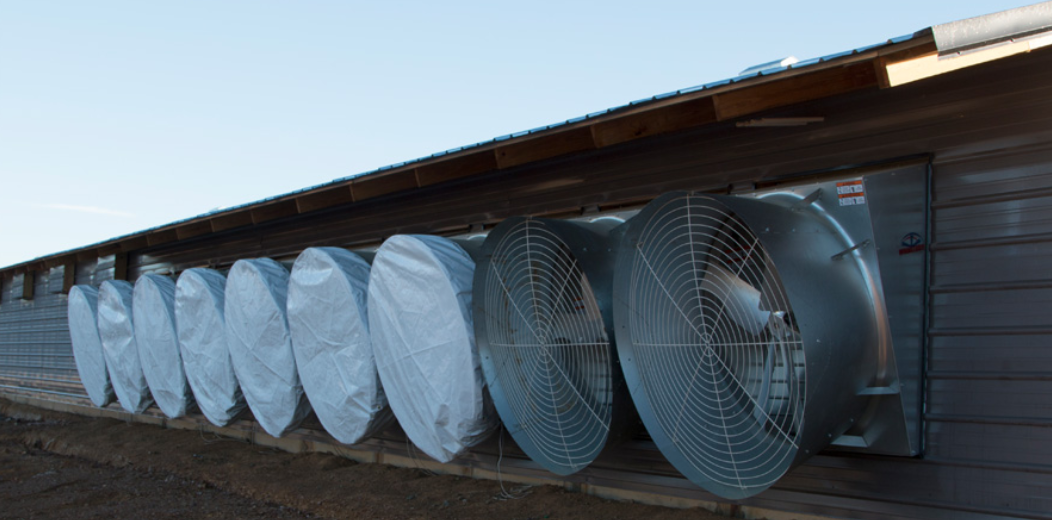



The cost of fan shutter heat loss in barns
...and how to prevent.A 54" summer exhaust fan comes equipped with a 58"x 58" shutter (23 sq. ft.) constructed of individual 3-1/2" wide vanes. If the vanes sealed perfectly during cold weather, the only heat loss would be through conduction. We can estimate this heat loss using an outside temperature of 15 degrees, an inside target temperature of 70, and an R-1 insulation value for the shutter.
23 sq. ft. x 1 x 55° temperature differential = 1,265 btu /hr.
 |
| A dirty shutter prevents the vanes from closing completely, allowing cold air to enter. |
But the vanes don't seal up perfectly. Dirty shutters or sticky hinges prevent the vanes from closing completely. It is not uncommon to see a vane stuck in an open position because of a bent rod or even missing altogether. Heat loss through infiltration occurs when cold outside air enters through these gaps. A 58" x 58" shutter has sixteen horizontal vanes. Let's assume a gap between the vanes and each side and top.
One method of calculating infiltration heat loss is known as the crack method. An older ASHRAE (American Society of Heating, Refrigerating and Air Conditioning Engineers) publication assigns a heat loss of 1 cfm per linear foot of crack. They also set a heat value per hour of 1.085, which converts cfm to Btus per hour. This formula for calculating infiltration heat loss is:
1.085 x (Linear feet of cracks x 1 cfm) x temperature differential
19 cracks x 58" = 1,102" / 12 = 91 linear ft.
91 x 1 cfm = 91 total cfm loss
70° - 15° =55° temperature differential
1.085 x 91 x 55 = 5,430 Btu loss / hour
 |
| Prefabricated closure doors reduce heat loss to almost zero. |
Any infiltration heat loss calculation is, at best, a rough estimate. Many variables, such as site location, wind speed, and shutter condition, will affect the actual amount of heat loss. Choosing a material with a higher R-value to close off the drafts would also decrease loss from conduction. Many producers cover the shutters with foam board, bubble pack, or even prefab closure doors to reduce heat loss to almost zero.
 |
| Fan covers are a cost-effective method to reduce heat loss from air infiltration. |
Adding fabric covers is a simple, cost-effective method to reduce loss from cold air infiltration. These lightweight covers, manufactured from lightweight rip-stop material, install over the fan cones with an elastic strap. Because a properly installed cover eliminates drafts, we can compare the earlier calculations to estimate the potential savings.
Heat loss without fan cover - 5,430 BTU/ hr
Hear loss with fan cover - 1,265 BTU/hr
4,165 BTU/ hr difference
4,165 BTU x 24 hours = 99,960 Btu / 91,000 Btu/gal/LP = 1.09 Gal/ LP/ Day
1.09 gals x $2.00 LP x 30.4 = $60.80 savings per month.
With a cost of about $50, fan covers will quickly pay for themselves. While less energy efficient than more elaborate devices, the fabric covers have several advantages. They are easy to store during the off-season as they fold down to a small size. They also have a built-in safety factor; if the fan powers up unexpectedly during a warm spell, the cover will blow off to prevent damage.
Click this link to see more information on available fan covers.






